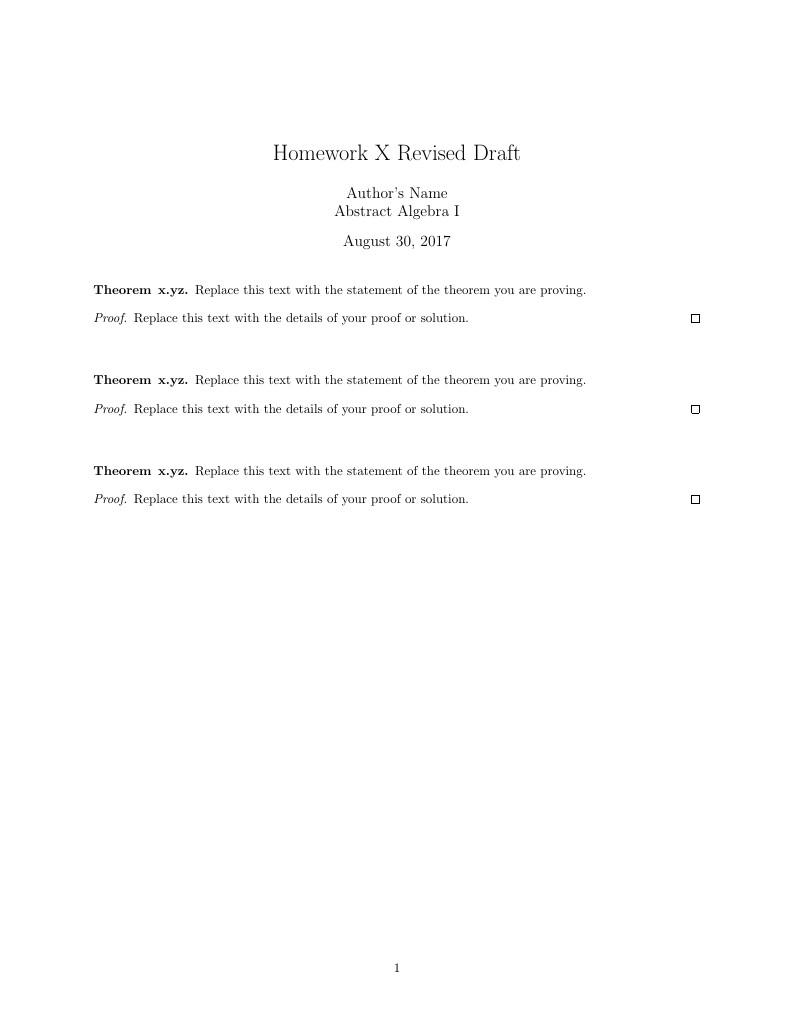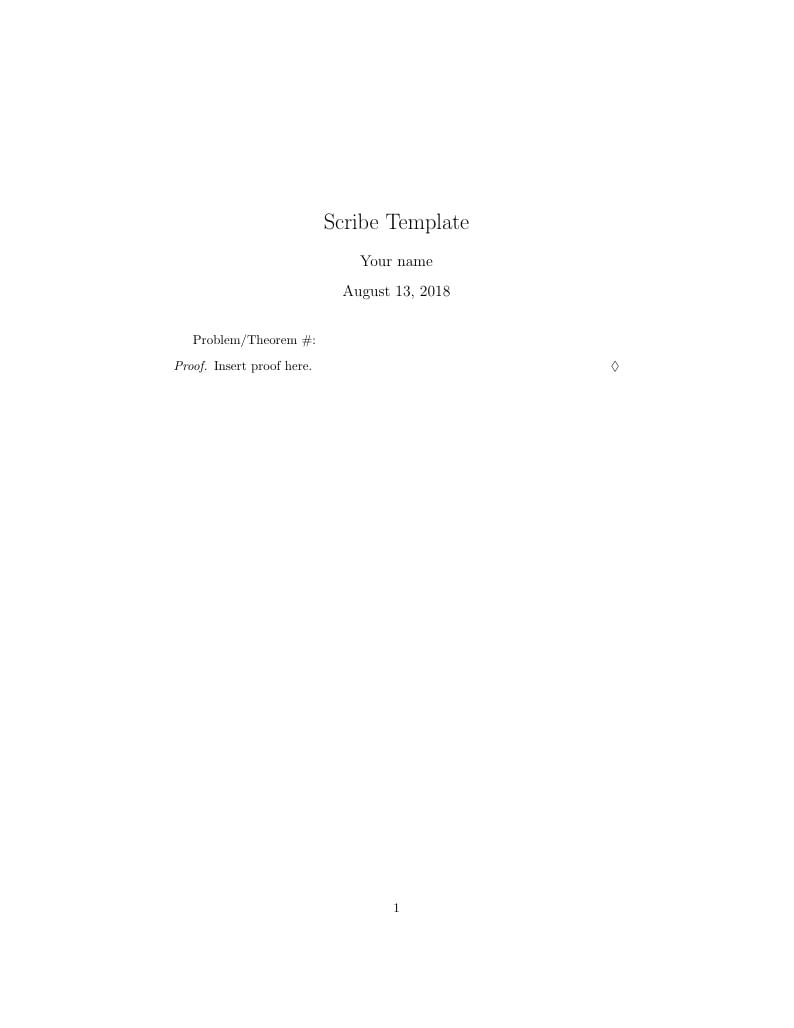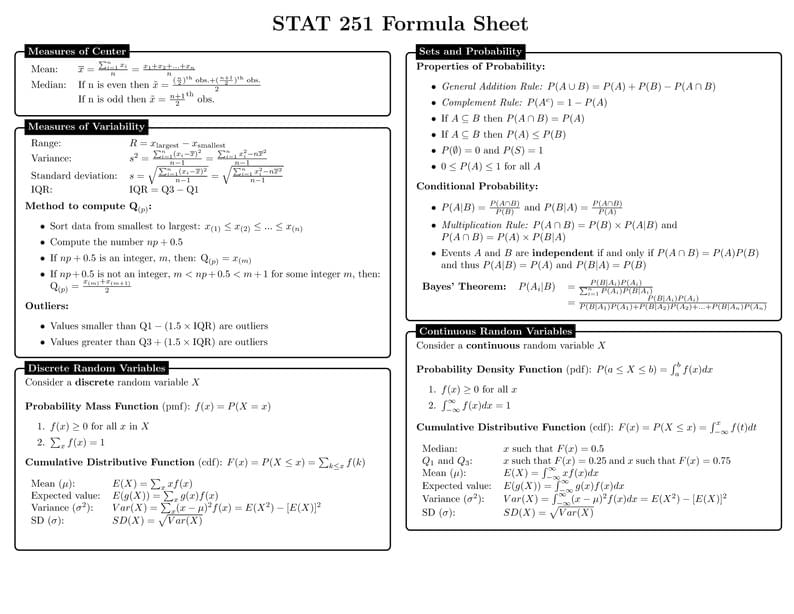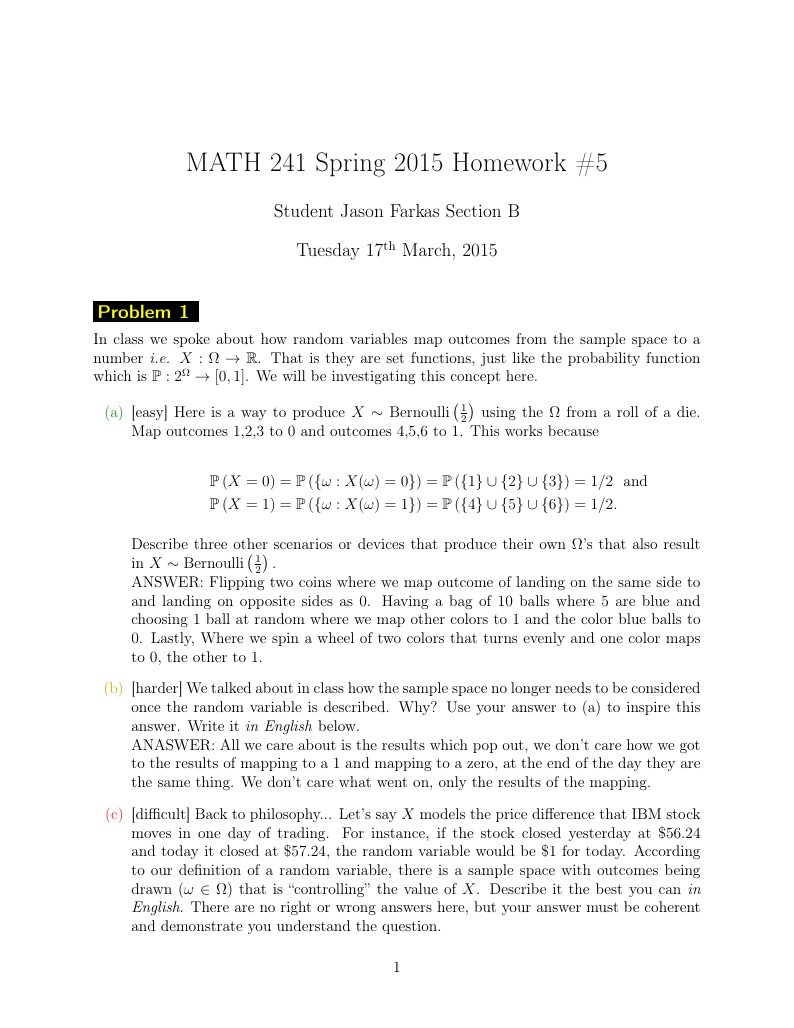LaTeX templates and examples — Math
Recent

高校数学~大学基礎レベルの数学の問題集(解答付き) Simple math problem set with solution.

This is the template for homework revised drafts for Dr. Sykes's Abstract Algebra class. It is adapted from Dana Ernst's original weekly homework template.

Discret Hartley Transform is a unitary transform although its proof is hard to find in the Web. This short note explains that the Discrete Hartley Transform is an involution, which implies that this transform is unitary indeed.

This is a template for Dordt College Math 304 students to use in preparing their proofs/solutions for submission to our class notes document.

Göteborg universitet / Chalmers

Formula sheet for a statistics course

The path to success in this class is to do many problems. Unlike other courses, exclusively doing reading(s) will not help. Coming to lecture is akin to watching workout videos; thinking about and solving problems on your own is the actual ``working out''. Feel free to \qu{work out} with others; \textbf{I want you to work on this in groups.} Reading is still \textit{required}. But for this homework set, I can't find anything from the 7th edition of Ross except the first few pages of Chapter 4 that are \qu{worth it} for you to read. The problems below are color coded: \ingreen{green} problems are considered \textit{easy} and marked \qu{[easy]}; \inorange{yellow} problems are considered \textit{intermediate} and marked \qu{[harder]}, \inred{red} problems are considered \textit{difficult} and marked \qu{[difficult]}, \inpurple{purple} problems are extra credit. The \textit{easy} problems are intended to be ``giveaways'' if you went to class. Do as much as you can of the others; I expect you to at least attempt the \textit{difficult} problems. This homework is worth 100 points but the point distribution will not be determined until after the due date. Late homework will be penalized 10 points per day. Between 1--15 points are arbitrarily given as a bonus (conditional on quality) if the homework is typed using \LaTeX. Links to instaling \LaTeX~and program for compiling \LaTeX~is found on the syllabus. You are encouraged to use \url{overleaf.com} (make sure you upload both the hwxx.tex and the preamble.tex file). If you are handing in homework this way, read the comments in the code; there are two lines to comment out and you should replace my name with yours and write your section. If you are asked to make drawings, you can take a picture of your handwritten drawing and insert as a figure or leave space using the \qu{$\backslash$vspace} command and draw them in after printing or attach them stapled. The document is available with spaces for you to write your answers. If not using \LaTeX, print this document and write in your answers. \textbf{Handing it in without this printout is NO LONGER ACCEPTABLE.} Keep this page printed for your records. Write your name and section below where section A is if you're registered for the 9:15AM--10:30AM lecture and section B is if you're in the 12:15PM-1:30PM lecture.

This project introduces the idea of recursive sequences. Students then prove that a given recursive sequence converges and find its limit. The final portion of the project is a derivation and investigation of the Fibonacci Sequence and the Golden Ratio.

In this we examine the concept of the dimension of fractals, extending the idea of integer dimension to fractals, which we define and investigate here in. Moving on we consider the Minkowski dimension, sometimes referred to as the "box dimension", of a fractal. We then continue to define and examine another type of dimension; the Hausdorff dimension. We then investigate under what conditions these are equal finally moving on to prove Hutchinsons Theorem,
\begin
Discover why over 20 million people worldwide trust Overleaf with their work.